Places and Monuments
1 Our Lady of the Snow
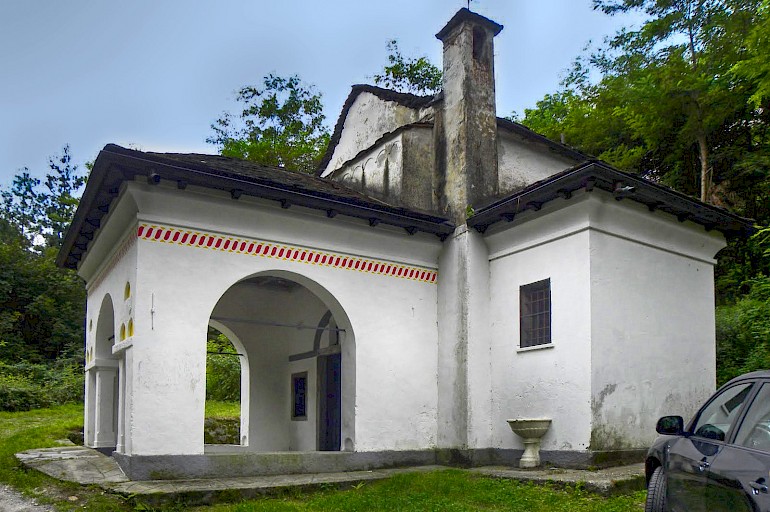 The oratory of Madonna della Neve, also known as the "church of Ponte Antico", is located in the Ponte Antico area, along the road that leads to Strona Valley. The church most probably dates back to the 16th century. Inside, on the bottom wall, there is a fresco of the Crowned Virgin on a throne; the outside is characterised by a portico, where pilgrims could rest before continuing their journey.
The oratory of Madonna della Neve, also known as the "church of Ponte Antico", is located in the Ponte Antico area, along the road that leads to Strona Valley. The church most probably dates back to the 16th century. Inside, on the bottom wall, there is a fresco of the Crowned Virgin on a throne; the outside is characterised by a portico, where pilgrims could rest before continuing their journey.
Scopri di più
2 Forum Omegna
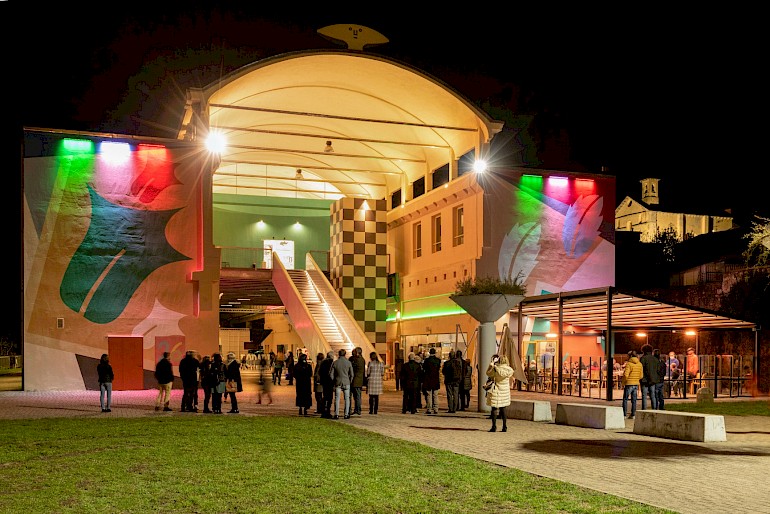 Founded in 1998, thanks to EU contributions and the commitment of the town's citizens, the Forum is a structure managed by the Omegna Museum Art and Industry Foundation to promote historical research on industrialisation processes, preservation of the memory of the industrial civilisation and the identity of the territory. It hosts a permanent collection as well as displays and exhibitions on the industrial history of household products, the territory and other cultural aspects. A place for special educational opportunities, including for young professionals. The Omegna Forum has a Shop that sells local food and hand crafted products.
Tel +39 0323 866141fondmaio@forumomegna.org
Founded in 1998, thanks to EU contributions and the commitment of the town's citizens, the Forum is a structure managed by the Omegna Museum Art and Industry Foundation to promote historical research on industrialisation processes, preservation of the memory of the industrial civilisation and the identity of the territory. It hosts a permanent collection as well as displays and exhibitions on the industrial history of household products, the territory and other cultural aspects. A place for special educational opportunities, including for young professionals. The Omegna Forum has a Shop that sells local food and hand crafted products.
Tel +39 0323 866141fondmaio@forumomegna.orgScopri di più
3 Rupestrian incisions
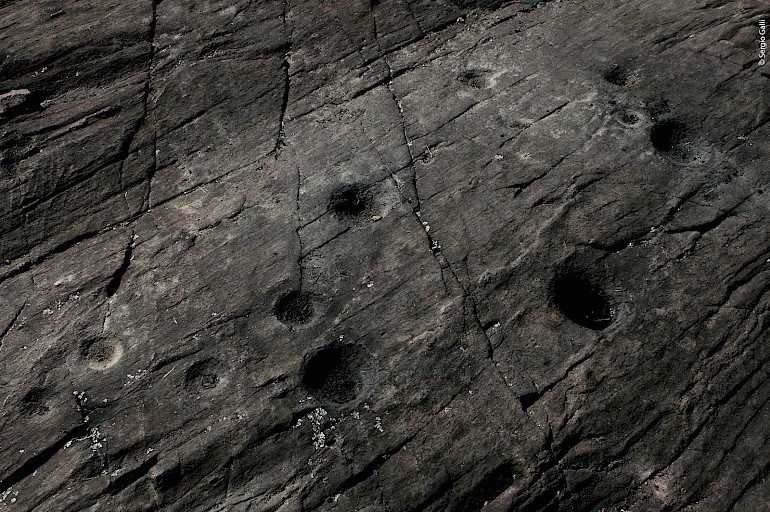 The cup mark engravings, which date back to prehistoric times, can be found on a rock in the Monte Zuoli area, a short drive away, in the Cireggio neighbourhood, in a beautiful panoramic setting. In the same area, there are also two "slide-like" rocks and many other smooth sloping rocks. According to tradition, young women of childbearing age used to slide down these rocks as a propitiatory ritual.
The cup mark engravings, which date back to prehistoric times, can be found on a rock in the Monte Zuoli area, a short drive away, in the Cireggio neighbourhood, in a beautiful panoramic setting. In the same area, there are also two "slide-like" rocks and many other smooth sloping rocks. According to tradition, young women of childbearing age used to slide down these rocks as a propitiatory ritual.
Scopri di più
4 Ponte Antico
 For many years, due to its characteristic structure, the bridge was thought to be Roman, but in fact it dates back to the Sforza-Visconti era and was probably built “after 1490 when Bartolomeo Calco, Secretary of Duke Ludovico Sforza, expressed to the governors of the cities of Omegna and Ornavasso the Duke's disappointment for not having yet completed the construction of the bridge”.
Originally it comprised two round arches supported by a central base built on a rock in the middle of the river Strona. According to historians, in 1920, most probably a huge rock fell from the mountain and completely destroyed the first arch.
For many years, due to its characteristic structure, the bridge was thought to be Roman, but in fact it dates back to the Sforza-Visconti era and was probably built “after 1490 when Bartolomeo Calco, Secretary of Duke Ludovico Sforza, expressed to the governors of the cities of Omegna and Ornavasso the Duke's disappointment for not having yet completed the construction of the bridge”.
Originally it comprised two round arches supported by a central base built on a rock in the middle of the river Strona. According to historians, in 1920, most probably a huge rock fell from the mountain and completely destroyed the first arch.Scopri di più
5 Porta Romana (Roman Gate)
 The medieval gate, built in the 11th century, is the last one remaining of the original five gates of the city's walls: gate Maggiore, Salera, Segnara, Castello and Valle, today known as “Romana”. It can be easily reached from the city centre. With your back to the entrance of the Church of Sant'Ambrogio, turn left and then immediately right, take the narrow Via Zanoia and after a few metres you will reach Via Matteotti.
The medieval gate, built in the 11th century, is the last one remaining of the original five gates of the city's walls: gate Maggiore, Salera, Segnara, Castello and Valle, today known as “Romana”. It can be easily reached from the city centre. With your back to the entrance of the Church of Sant'Ambrogio, turn left and then immediately right, take the narrow Via Zanoia and after a few metres you will reach Via Matteotti.
Scopri di più
6 SANT’AMBROGIO’S CHURCH
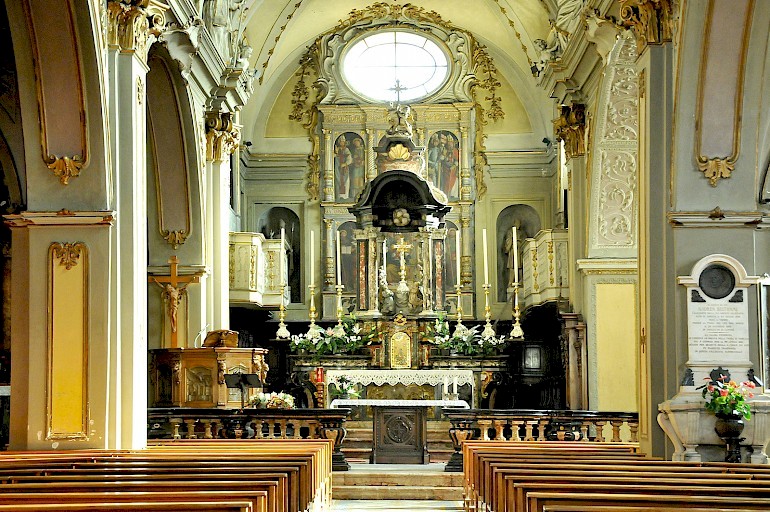 SANT’AMBROGIO’S CHURCH
Madonna di Lourdes Chapel
Omegna parish church, whose original nucleus was erected around the 11th century, is the result of a continous overlapping of different architectural and artistic styles which, since 1470, in the baroque period then and in the 1920s finally, have occured over the centuries.
The south side of the church is characterised by some of the most ancient elements.
Among them, in particular, the Madonna of Lourdes chapel: an adaptation dating 1913 of the old ossuary, that now houses the rebuilding of the cave with the statuary group representing the Madonna and a young Bernadette in painted white murble.
Reading the documents of the parish archive, as diligently documented in the Novara historical bullettin LXXXII with the title of Sant’Ambrogio from Omegna in the last two centuries by Fabrizio Bianchetti (1991), we can obtain some
SANT’AMBROGIO’S CHURCH
Madonna di Lourdes Chapel
Omegna parish church, whose original nucleus was erected around the 11th century, is the result of a continous overlapping of different architectural and artistic styles which, since 1470, in the baroque period then and in the 1920s finally, have occured over the centuries.
The south side of the church is characterised by some of the most ancient elements.
Among them, in particular, the Madonna of Lourdes chapel: an adaptation dating 1913 of the old ossuary, that now houses the rebuilding of the cave with the statuary group representing the Madonna and a young Bernadette in painted white murble.
Reading the documents of the parish archive, as diligently documented in the Novara historical bullettin LXXXII with the title of Sant’Ambrogio from Omegna in the last two centuries by Fabrizio Bianchetti (1991), we can obtain someScopri di più
7 De Angeli-Frua Area
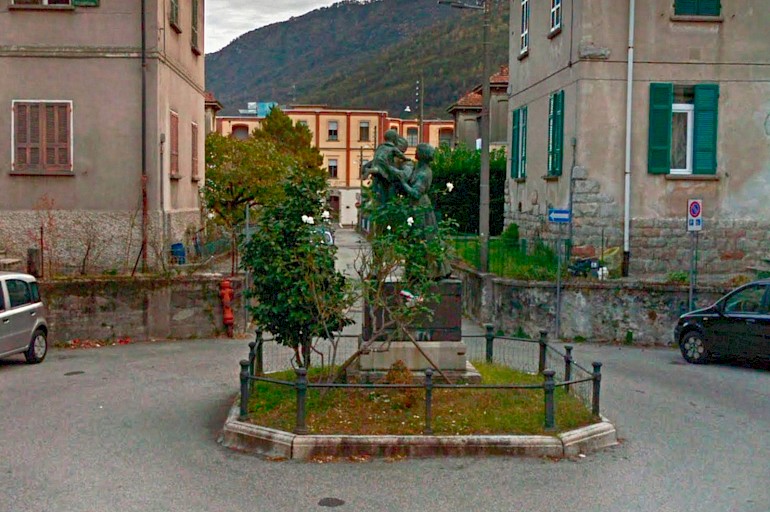 Omegna has a great industrial tradition. In the mid 1800, the town witnessed the foundation of factories such as the Ferriera and Fabbricone Angeli-Frua, the Italian textile company established in 1896 following the merge of the cotton and printing factories of Ernesto De Angeli and Giuseppe Frua. Significant architectural elements of the plants and the workers village are a reminder of the town's industrial heritage. The very nice Monument to the Family is located right in the heart of the town, which at the beginning of the 20th century was in full expansion.
Omegna has a great industrial tradition. In the mid 1800, the town witnessed the foundation of factories such as the Ferriera and Fabbricone Angeli-Frua, the Italian textile company established in 1896 following the merge of the cotton and printing factories of Ernesto De Angeli and Giuseppe Frua. Significant architectural elements of the plants and the workers village are a reminder of the town's industrial heritage. The very nice Monument to the Family is located right in the heart of the town, which at the beginning of the 20th century was in full expansion.Scopri di più
8 Fantasy Park
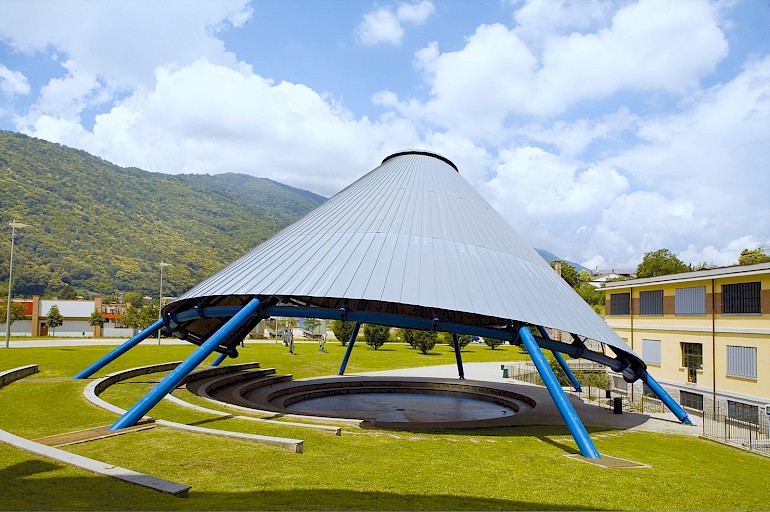 A literary and educational park for children designed to promote and divulge the work of Gianni Rodari and his “fantasy method”. The facilities comprise a Playroom, the Gardens of the Cake in the Sky and the Forum.
A literary and educational park for children designed to promote and divulge the work of Gianni Rodari and his “fantasy method”. The facilities comprise a Playroom, the Gardens of the Cake in the Sky and the Forum.
Scopri di più
9 Workers Memorial
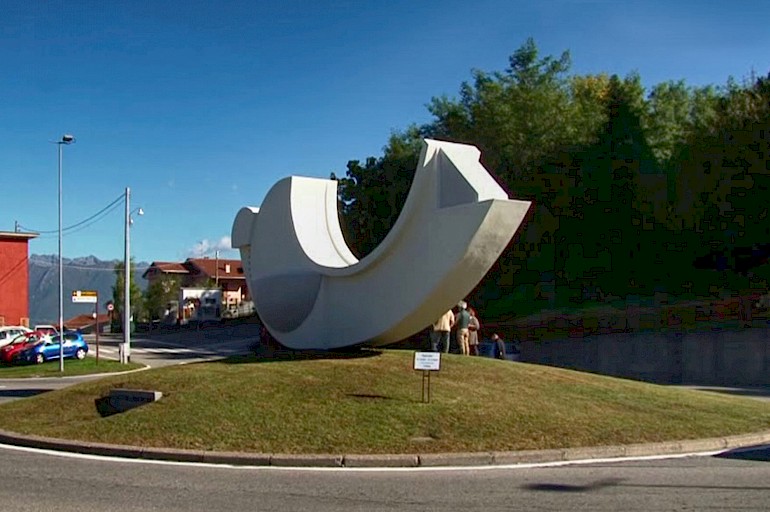 The cement and iron monument, which has recently been restored, is the work of Gilberto Carpo and Giovanni Crippa and was built between 1993 and 1994. The 50-cubic-metre structure is probably the largest workers memorial in Italy.
The cement and iron monument, which has recently been restored, is the work of Gilberto Carpo and Giovanni Crippa and was built between 1993 and 1994. The 50-cubic-metre structure is probably the largest workers memorial in Italy.
Scopri di più
10 Sanctuary of Our Lady of the People
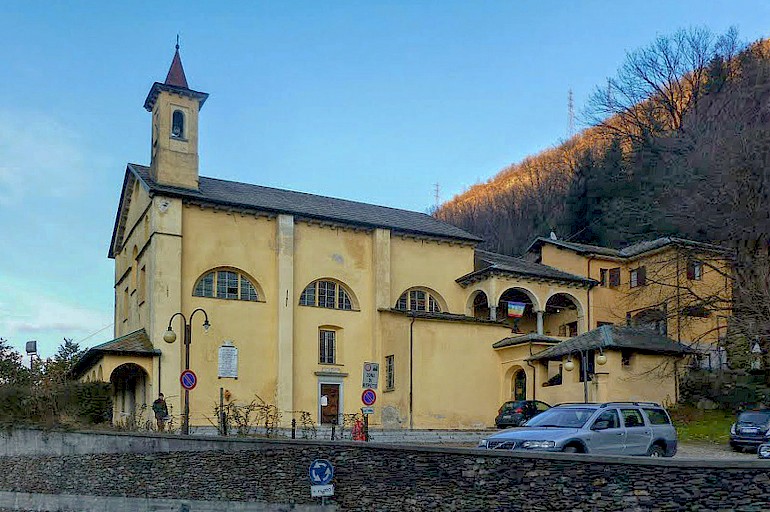 No historical documents mention its constructions but the oratory in the Carcallo area already existed when, on 4 April 1616, the statue of the Virgin and Baby Jesus was blessed for the first time. The multi-colour wood statue is dressed in fine textiles richly decorated with gold and embroidery elements – a very old Spanish tradition – therefore, only the visible parts are finished. The original clothing was lost and replaced with garments created especially for it in the past century. The new garments were restored in 2016 by the Benedictine nuns of the Island of San Giulio, in occasion of the 400th anniversary of the first coronation.
In 1616, the church was named “Oratory of Our Lady of the People”, characterised by a “piazza on one side and a large fountain made of decorated serizzo granite”, as described in a parish inventory dated 27 August 1696.
No historical documents mention its constructions but the oratory in the Carcallo area already existed when, on 4 April 1616, the statue of the Virgin and Baby Jesus was blessed for the first time. The multi-colour wood statue is dressed in fine textiles richly decorated with gold and embroidery elements – a very old Spanish tradition – therefore, only the visible parts are finished. The original clothing was lost and replaced with garments created especially for it in the past century. The new garments were restored in 2016 by the Benedictine nuns of the Island of San Giulio, in occasion of the 400th anniversary of the first coronation.
In 1616, the church was named “Oratory of Our Lady of the People”, characterised by a “piazza on one side and a large fountain made of decorated serizzo granite”, as described in a parish inventory dated 27 August 1696.Scopri di più
11 Parish Church of Saint Gaudenzio
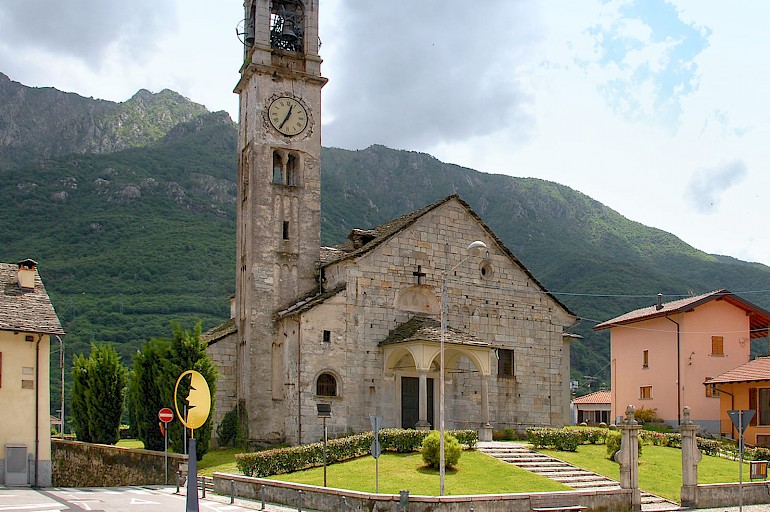 According to tradition, the church is one of the 100 churches founded by Greek missionary Saint Giulio (4th century). Located in Crusinallo, the most densely populated area in Omegna, the Romanesque church comprises two unequal naves supported by granite columns. The foundations of the first church and the bell tower basement suggest that the structure was built in the 11th century. The asymmetrical façade maintains its Romanesque charm despite the signs of the subsequent extensions and changes: during the first half of the 17th century, a second nave with rib volts was added to the first nave and apse. The pronaos, the ancient chapel-ossuary demolished after the First World War and the baptistery attached to the bell tower – which hosts an anonymous fresco of the baptism of Christ – are of the same period.
According to tradition, the church is one of the 100 churches founded by Greek missionary Saint Giulio (4th century). Located in Crusinallo, the most densely populated area in Omegna, the Romanesque church comprises two unequal naves supported by granite columns. The foundations of the first church and the bell tower basement suggest that the structure was built in the 11th century. The asymmetrical façade maintains its Romanesque charm despite the signs of the subsequent extensions and changes: during the first half of the 17th century, a second nave with rib volts was added to the first nave and apse. The pronaos, the ancient chapel-ossuary demolished after the First World War and the baptistery attached to the bell tower – which hosts an anonymous fresco of the baptism of Christ – are of the same period.Scopri di più
12 The Sanctuary of Martyr Saint Fermo
 The sanctuary, located in the Crusinallo area – in a beautiful park that enjoys views of Omegna and Lake Orta – dates back to 1670 and is the most important sanctuary dedicated to the martyr in the Piedmont region. What we see today is the result of the evolution of a small 16th-century chapel, built at the behest of some members of the local community. During the 1600s, it became a modest oratory, dedicated to martyrs Fermo and Dorotea. The works to transform it in the church and bell tower we see today were completed in 1773. Inside, the single nave hosts the relics of Saint Fermo, a fresco depicting the martyr – dating back to the 16th century – on the left wall, an imposing 18-century wooden altar dedicated to Our Lady of the Angels and a splendid organ, by Alessandro Mentasti (1888).
The sanctuary, located in the Crusinallo area – in a beautiful park that enjoys views of Omegna and Lake Orta – dates back to 1670 and is the most important sanctuary dedicated to the martyr in the Piedmont region. What we see today is the result of the evolution of a small 16th-century chapel, built at the behest of some members of the local community. During the 1600s, it became a modest oratory, dedicated to martyrs Fermo and Dorotea. The works to transform it in the church and bell tower we see today were completed in 1773. Inside, the single nave hosts the relics of Saint Fermo, a fresco depicting the martyr – dating back to the 16th century – on the left wall, an imposing 18-century wooden altar dedicated to Our Lady of the Angels and a splendid organ, by Alessandro Mentasti (1888).Scopri di più
13 Church of Saint Bernardino
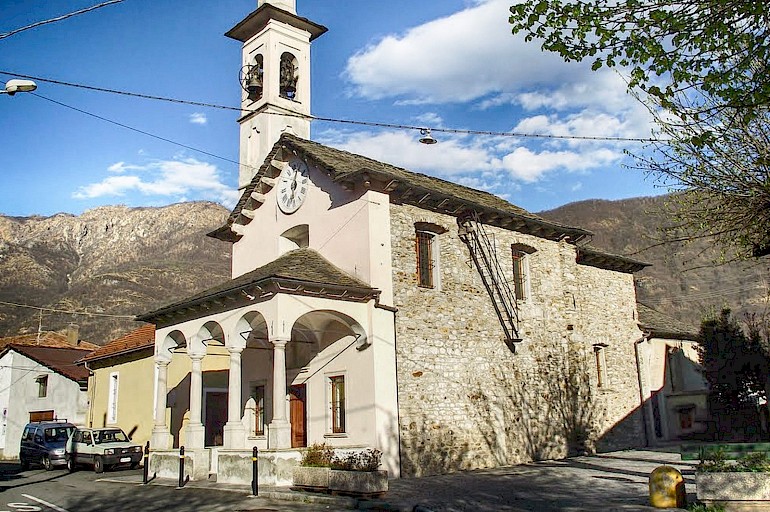 The church is dedicated to Saint Bernardino from Siena and is located in the oldest part of the Bagnella area, part of Omegna. The church, presumably built in the 15th century, features a façade characterised by a porch with three fornixes supported by white granite columns. In 1640, the churched acquired a beautiful altarpiece by Cristoforo Rocca, embellished by a wooden frame hand crafted in Valsesia. The members of the local community have always been devoted to the church and their generous donations have contributed to the numerous restoration works and improvements carried out during the years.
Celebrations in honour of Saint Bernardino take place on 20 May and are marked by a village festival.
The church is dedicated to Saint Bernardino from Siena and is located in the oldest part of the Bagnella area, part of Omegna. The church, presumably built in the 15th century, features a façade characterised by a porch with three fornixes supported by white granite columns. In 1640, the churched acquired a beautiful altarpiece by Cristoforo Rocca, embellished by a wooden frame hand crafted in Valsesia. The members of the local community have always been devoted to the church and their generous donations have contributed to the numerous restoration works and improvements carried out during the years.
Celebrations in honour of Saint Bernardino take place on 20 May and are marked by a village festival.
Scopri di più
14 Parish Church of Saint Maiolo
 This church, located on the outskirts of Agrano, on the Mottarone hillside, is the first building visitors come across when they arrive in Omegna. The first mention of the presence of a place of worship in the area dates back to 1569. Romanesque elements found in the bell tower suggest that a church had already been built on the same spot. It features a basilica plan with three naves, a large apse and choir. The bell tower has been renewed numerous times. The chapel built outside the church hosts the “Mummy of Agrano”, the mummy of a woman who lived in the second half of the 17th century, once worshipped by locals. Celebrations in honour of the Saint are held on 11 May.
This church, located on the outskirts of Agrano, on the Mottarone hillside, is the first building visitors come across when they arrive in Omegna. The first mention of the presence of a place of worship in the area dates back to 1569. Romanesque elements found in the bell tower suggest that a church had already been built on the same spot. It features a basilica plan with three naves, a large apse and choir. The bell tower has been renewed numerous times. The chapel built outside the church hosts the “Mummy of Agrano”, the mummy of a woman who lived in the second half of the 17th century, once worshipped by locals. Celebrations in honour of the Saint are held on 11 May.Scopri di più
15 Church of Santa Maria Assunta
 Located in the Cireggio area, built on the ruins of a 15-century oratory, the church is a 17th-century Baroque building with a single nave. Above the entrance door, recently restored, in addition to the original colours and a cherry tree (which symbolises the deep connection between the church and the hamlet of Cireggio), visitors can see an inscription showing the original construction date: 1595. The front porch was probably built in 1610; the construction of the octagonal bell tower started between 1610 and 1612 and was completed in 1614. Inside, the church is endowed with an austere and familiar religious atmosphere, simple and sumptuous.
Located in the Cireggio area, built on the ruins of a 15-century oratory, the church is a 17th-century Baroque building with a single nave. Above the entrance door, recently restored, in addition to the original colours and a cherry tree (which symbolises the deep connection between the church and the hamlet of Cireggio), visitors can see an inscription showing the original construction date: 1595. The front porch was probably built in 1610; the construction of the octagonal bell tower started between 1610 and 1612 and was completed in 1614. Inside, the church is endowed with an austere and familiar religious atmosphere, simple and sumptuous.Scopri di più
16 Church of Our Lady of the Grapes
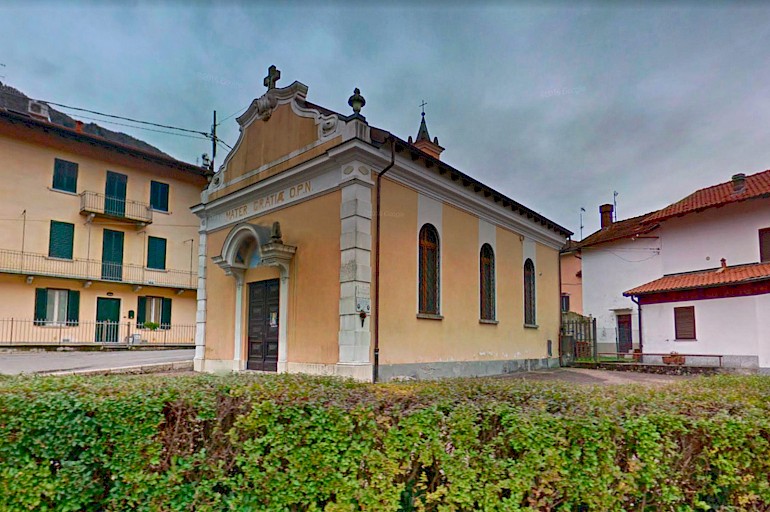 A small church with a single nave, built in the 1930s thanks to private donations. It is located in the heart of the small area of Verta, north of Omegna, and is characterised by Baroque decorations on the façade, a rectangular plan and a single nave. But what makes it unique is its rare and unusual name. Inside, a painting by Carlo Melloni (1947), a reproduction of "Our Lady of the Grapes", by Pierre Mignard.
Our Lady of the Grapes is celebrated every year on the third Sunday of September.
A small church with a single nave, built in the 1930s thanks to private donations. It is located in the heart of the small area of Verta, north of Omegna, and is characterised by Baroque decorations on the façade, a rectangular plan and a single nave. But what makes it unique is its rare and unusual name. Inside, a painting by Carlo Melloni (1947), a reproduction of "Our Lady of the Grapes", by Pierre Mignard.
Our Lady of the Grapes is celebrated every year on the third Sunday of September.Scopri di più
17 Quartiere Vaticano
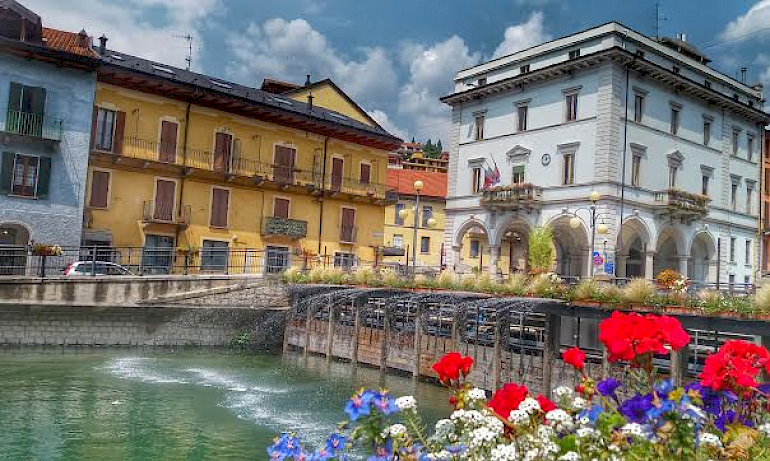 Passeggiando per il centro storico ci si addentra nei vicoli del "Quartiere Vaticano" e si possono ammiarre le case dei secoli XI, XII e XIII che sorgono lungo la "Via del Butèr" ( oggi via Alberganti), così chiamata perchè in passato sotto i suoi portici avveniva la vendita del formaggio.
Passeggiando per il centro storico ci si addentra nei vicoli del "Quartiere Vaticano" e si possono ammiarre le case dei secoli XI, XII e XIII che sorgono lungo la "Via del Butèr" ( oggi via Alberganti), così chiamata perchè in passato sotto i suoi portici avveniva la vendita del formaggio.Scopri di più
18 La Morta di Agrano
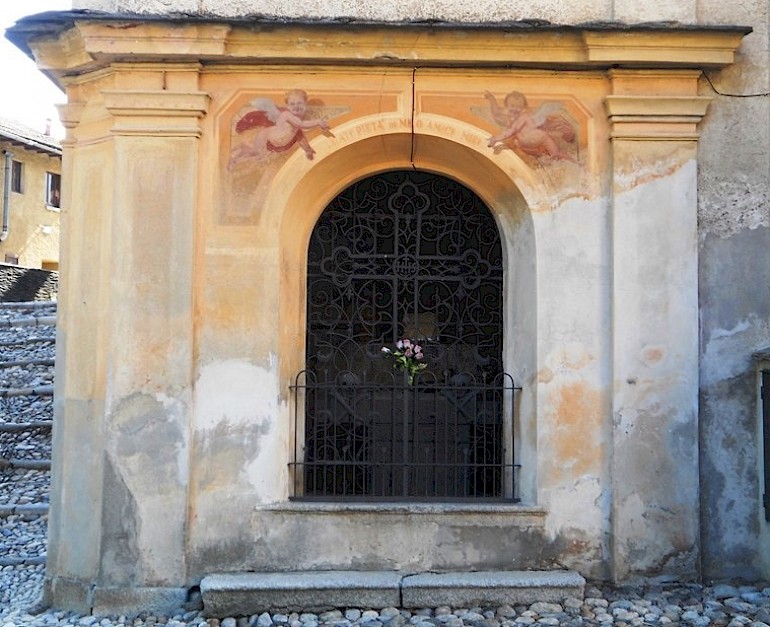 La Morta è una donna ritrovata mummificata nel 1792 nell'ossario del locale cimitero che è in seguito diventata oggetto di devozione da parte degli abitanti della zona. La mummia è attualmente conservata in una teca esposta all'interno della cappella costruita all'esterno delle chiesa parrocchiale di Agrano.
La Morta è una donna ritrovata mummificata nel 1792 nell'ossario del locale cimitero che è in seguito diventata oggetto di devozione da parte degli abitanti della zona. La mummia è attualmente conservata in una teca esposta all'interno della cappella costruita all'esterno delle chiesa parrocchiale di Agrano.Scopri di più
19 Monte Zuoli
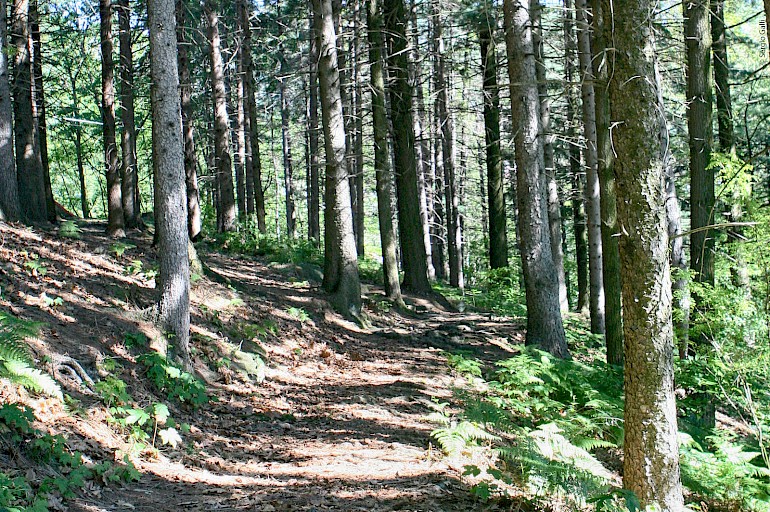 Passed Bagnella, at the bottom of the hill that goes to Nonio, is where Monte Zuoli Fitness Trail starts. A recently-renewed trail that connects Omegna to the top of our town's highest hill. The equipment is located all along the trail in dedicated areas and is available to anyone wishing to train outdoors. Close by there is a mountain bike ring track and two natural rock climbing facilities.
Passed Bagnella, at the bottom of the hill that goes to Nonio, is where Monte Zuoli Fitness Trail starts. A recently-renewed trail that connects Omegna to the top of our town's highest hill. The equipment is located all along the trail in dedicated areas and is available to anyone wishing to train outdoors. Close by there is a mountain bike ring track and two natural rock climbing facilities.Scopri di più
Check out the upcoming events
Omegna is not just a town by the lake Orta, but a lively place with many initiatives.
Event section
